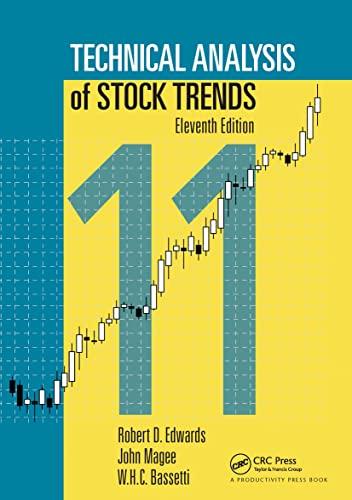Question
Please help me to solve this problem, please give me the correct answer, thank you so much. John Barton is both excited and amazed. Excited
Please help me to solve this problem, please give me the correct answer, thank you so much.
John Barton is both excited and amazed. Excited because on graduating from college one year ago at age 22, he landed a good job with a commercial leasing firm and he is enjoying the work. His company has good benefits and has just given him a raise so that in this next year he will be earning $50,000 per year.
He is amazed because even with this raise he feels that money is just as scarce as it was when he was a student. The paycheck comes and before he knows it, it is gone again. Certainly he has many more things than he did before: a nice new car, an attractive apartment with some real furniture, and a wide screen television. He has also made new friends and has been able to keep up with a number of his university friends.
Nonetheless, he is still concerned that he has little in savings to handle emergencies (becoming ill, terminated from his job) or life changing events like getting married. John feels that it is time to get his finances in order as his father is always saying. He intends to determine his personal Net Worth and to understand where his money comes from and where it goes. He has gathered the following information to help him with this task.
His annual salary is $50,000 and in addition he earns $150 per year in dividends on stock that his grandmother left him in her will. The stock was worth $4,200 when he inherited it. A few days ago John checked the stock on the Internet and saw that it is worth $5,000 now. Fifteen percent of his check is withheld for income taxes and another 9% for employment taxes (these tax rates already take into account the 401k pre-tax deduction from income so calculate the taxes using total salary). John must contribute $100 per month to obtain health and dental insurance under the company plan. He also earns about $100 per year in interest on a savings account. The current balance in the savings account is $800 and he has $300 in a checking account. His firm matches money he places in an employee retirement savings plan (401K plan). John has put $2,500 in the plan to date and the company matched it. He intends to continue with this level of contribution in the future. If John leaves the firm prior to five years of service he will not be entitled to the company match. In other words, the money the company has contributed and continues to contribute is not his until he has been with the company for five years. So the balance showing in his 401k account includes only his contributions.
John purchased a nice car upon graduation (one year ago) for $23,000 and has maintained it carefully. He noticed that similar used cars of the same year are now selling for $15,000. He makes monthly car payments on a $22,000 loan, at 8% annual interest over 60 months and maintenance expenses run about $50 per month. Gas costs $135 per month (1,500 miles per month, 25 mpg, $2.25 per gallon) and toll road charges are $20 per month. Insurance is $2,400 per year.
His apartment rent is $1,000 per month with natural gas bills of $80 and electricity averaging $70 per month. Water and sewer combined are only $25 per month. John carries renters insurance to cover loss of goods in the apartment and liability for accidents; it costs $35 per month.
He estimates that he spends $600 per month on food (he eats out a lot), $100 on clothes monthly, and $200 on entertainment each month. He also takes a couple of short vacations through the year that cost in total about $2,000 annually.
His home furnishings were previously purchased for $5,000 and are currently worth about $4,000. In addition, he has a nice entertainment system that is worth $2,500 and personal items (clothes, etc.) of $2,000.
In addition to his auto loan, John has additional debt. John currently has a balance on his credit cards of $3,500 and he has been paying on average $100 per month on the account. He owes $20,000 on student loans and makes payments of $212 per month.
1.Compute Johns monthly car payments and figure out what the ending principal balance is on the loan at the end of the first year.

Step by Step Solution
There are 3 Steps involved in it
Step: 1

Get Instant Access to Expert-Tailored Solutions
See step-by-step solutions with expert insights and AI powered tools for academic success
Step: 2

Step: 3

Ace Your Homework with AI
Get the answers you need in no time with our AI-driven, step-by-step assistance
Get Started


